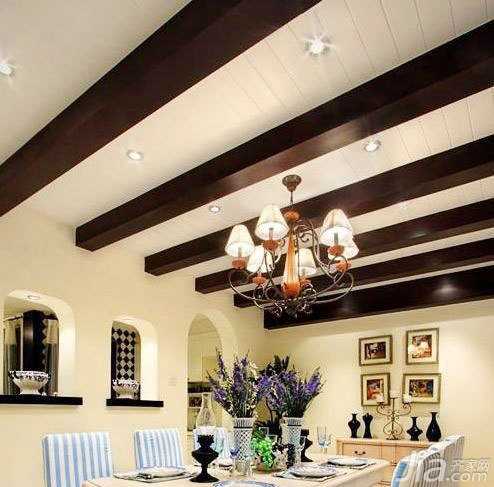
Most people see a ceiling as just a flat white surface, often overlooking its true potential. While many believe that lighting effects are the main concern, the ceiling plays a much more significant role in home design. It's not only about aesthetics but also function—ceiling designs can help hide structural elements like beams and pipes, provide insulation, and even improve soundproofing. With thoughtful planning, a well-designed ceiling can transform a space, adding depth, character, and visual interest.
When renovating your home, it's important to give the ceiling some attention. A creative ceiling design can make a big difference in how a room feels and looks. Here are some key considerations for ceiling design:
Plan for Lighting
The most basic function of a ceiling is to accommodate lighting. Hidden lights within the ceiling can create a soft, ambient glow that enhances the overall atmosphere of a room. Choosing the right lighting layout and color temperature can significantly affect the mood of your living space, making it feel more welcoming and cozy.
Kitchen Ceiling Materials
In the kitchen, moisture resistance is crucial. Plastic gussets are a popular choice because they’re easy to clean and resistant to humidity. However, metal ceilings have become increasingly popular due to their modern look and durability. Though pricier, they offer a more sophisticated appearance and are ideal for those looking to elevate their kitchen’s style.
Herringbone Ceiling Design
For homes with irregular or sloped ceilings, especially in older houses or villas, herringbone patterns can be a great solution. By using wooden panels and incorporating traditional eave-style designs, you can add a unique, rustic charm to your space. The choice of wood color and pattern will influence the final effect, so it's worth investing time in selecting the right materials.
Large-Space Ceilings
If your living room is spacious, consider a more elaborate ceiling design. Adding layers, recessed lighting, or multi-faceted edges can create a three-dimensional effect, making the ceiling visually engaging. This approach works particularly well with high-end light fixtures, enhancing both form and function.
Curved Lines for Softness
If your current ceiling design feels too rigid or uninviting, consider introducing curved lines. These gentle curves can soften the space, offering a more dynamic and artistic look. They help break up straight angles and bring a sense of movement and flow into the room.
Classic White Ceilings
A classic white ceiling doesn’t have to be boring. Using gypsum board panels with intricate details can add a touch of elegance. Pairing them with ornate chandeliers or decorative moldings can instantly elevate the ceiling’s appearance, giving it a timeless and refined look.
Ultimately, the ceiling is one of the most overlooked yet powerful elements in interior design. Whether you're going for a modern, rustic, or classical style, a well-thought-out ceiling design can enhance the entire space and reflect your personal taste. Don’t underestimate the impact of this often-overlooked part of your home.
FRP big-diameter pipe,FRP wide-diameter pipe,RP Pipework,FRP Small-scale Pipe,GRP Miniature Jacking Pipe
Zhejiang Huafeng new material Co., Ltd. , https://www.cnhfpipe.com